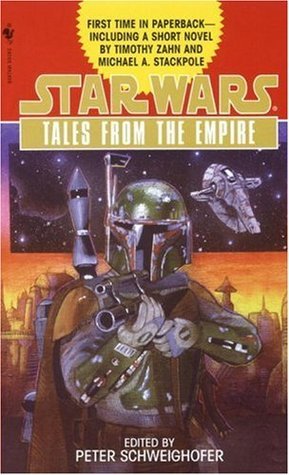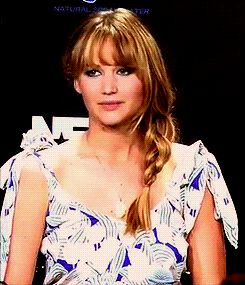What do you think?
Rate this book


320 pages, Mass Market Paperback
First published November 3, 1997
"Tinian on Trial" (Kathy Tyers): Aforementioned awesomeness. The characters are really well-painted for the short time you spend with them, and the way it ends leaves you hankering for more.
"Retreat from Coruscant" (Laurie Burns): Dude, this one was so cool and stirring and it absolutely unfolded in my mind's eye like a movie. Absolutely loved it.
"A Certain Point of View" (Charlene Newcomb): I didn't like the writing style so much here (it was honestly a little cringe-inducing), but I liked the content and themes a lot -- the main character has a brother in the Imperial army and who is killed by rebels, and she eventually has to come to terms with the fact that the system she believes in isn't exactly what it seems from a distance.
"Blaze of Glory" (Tony Russo): Sassy mercenary team! Collaboration and teamwork and chemistry and banter!! SACRIFICE AND FEELS.
"Slaying Dragons" (Angela Philips): Adored this one right off the bat with its awesome cross-media introduction. And tiny precocious hacker-protagonist!
"Do No Harm" (Erin Endom): LOVE LOVE LOVE LOVE LOVE. THIS ONE WAS THE BEST. Endom's prose was probably the most stylish and flat-out lovely in the entire anthology, which bums me out because it seems like it's the only one she's ever written. :(
The novella/short novel Side Trip was okay. (It turns out I preferred Zahn's sections over Stackpole's, too, for what it's worth.) My favourite thing about it was Corran's conversation about law enforcement, crime, and evil -- and what do you do when you've finally eradicated evil, and all that's left is the Empire? The writing/events themselves were really engaging and exciting, but I couldn't quite follow the convoluted plot and didn't really get it, plus it turned into exposition-city in the final chapter (like Poirot gathering everyone in the parlour to explain what you've just read) and tied into things that I had no idea what they were talking about. Guess it's time for me to read the Thrawn trilogy!
"Millions of people, like pawns," Kaileel said, pointing at the characters on their gameboard, "for the Emperor to do with what he will."
"But, Chief--"
"I fear the game is up," Kaileel said softly.
***
A stormtrooper, flattened against the curving wall, was just edging around the corner, blaster up and pointed directly at me.
Ambush, I thought, very coldly and clearly, as time slowed to a halt around me. I couldn't seem to get in a breath--the nauseated stunned emptiness was almost exactly what I'd felt at age six, after falling off a balcony flat onto my stomach. But my mind, trained to function logically in a crisis, kept clicking right along: There isn't time to warn Haslam. You're blocking the others--they can't shoot around you. If you fall, Vibrion's next in line.
You've got a blaster.
My right hand pulled the little hold-out blaster from its holster under my left sleeve, leveled it at the trooper, and fired. The shot angled upward just enough to pass between the breastplate and the bottom of the helmet; it took him square in the throat, and he let out a choked gurgle and dropped to his knees. His helmet flew off as he went down, allowing me a brief glimpse of a very young man, light brown hair damp with sweat and clinging to his skull, clear gray eyes wide in amazement, before he toppled flat onto his face.
***
Maybe the pretty rules of medicine don't hold up as well in war. Either way, there was nothing I could do about it now... except to wish that gray-eyed boy oneness with the Force that binds us all, and to go on with my life and my job as best I could. I sighed, got up--aching like the aftermath of a stun blast--and went in search of that hot drink.
They gave me a medal when we got back--the Field Achievement Award, the one they give all the field operatives who make it back from their first mission. I still have it. I threw it in a drawer and haven't looked at it since. But like a half-healed wound, I always know it's there.
***
It's amazing how something that could have been so beautiful can so easily be made so... vulgar. It seemed as if Thyne's definition of art was intimately wrapped up with the concepts of nudity, excess and a color scheme that relied heavily on pinks, purples and an irritatingly vibrant shade of green. Some of the statuary--what little of it actually could have found a home in the Museum of Fine Arts--had been garishly corrected by application of this color scheme, with excess paint having spilled down the walls. The paintings showed Corran a view of models he thought more appropriate for xenobiological textbooks and the holographs seemed the visual equivalent of a high-pitched scream.
